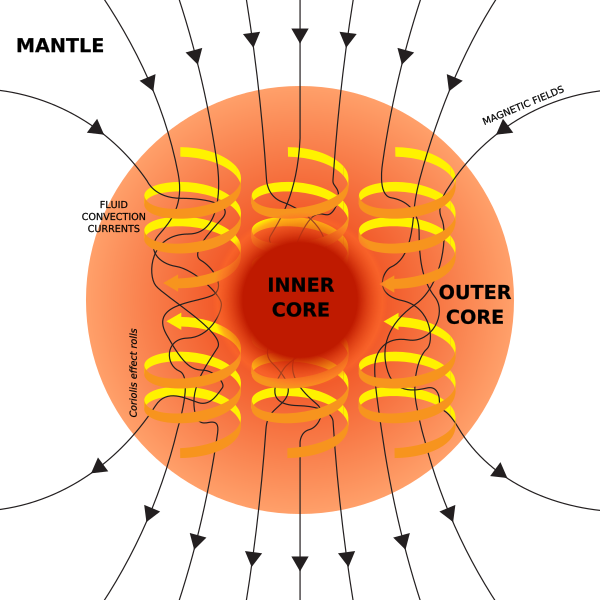From time to time, every few hundred thousand years or so, the Earth’s magnetic poles have been known to “flip” – but why? And what does this mean for us as a species?
What is a magnetic pole reversal?
During a pole reversal, Earth’s magnetic poles swap locations. Essentially, the north pole is transformed into the south pole and the south pole becomes the north pole.
This happens every 300,000 years or so on average, with the last one occurring around 780,000 years ago. The poles have reversed several hundred times in the last 160 million years, according to paleomagnetic records, and while no one knows exactly when the next reversal will occur, some experts believe we are long overdue another flip.
Since 1831, when our magnetic north pole was first precisely located, it has drifted north-northwest by more than 1,100 kilometers (600 miles) and its migration speed has increased from around 16 kilometers (10 miles) per year to 55 kilometers (34 miles) per year.
Why does it happen?
The Earth has a magnetic field, generated by processes from deep within the planet. Molten metallic material flows in the outer core, and as it cools, convective forces create movement, similar to boiling water on a stove. Earth’s rotation also churns up the molten metal, generating electrical currents.
Convection currents of molten metal in the outer core, driven by heat flow from the inner core, are organized into rolls by the Coriolis force and create circulating electric currents, which generate the magnetic field.
Our planet’s magnetic field is similar to that of a bar magnet in that it has a north and south pole, but it is far less stable. The forces behind it are constantly changing, which means the field itself is also in continual flux. As a result, the location of Earth’s magnetic north and south poles is gradually shifting, and will eventually completely flip.
Because of the variable nature of the forces driving the magnetic field, polarity reversals are not periodic and cannot be predicted.
“The flow of the metallic fluid (mostly molten iron) in the outer core of the Earth is chaotic and turbulent,” geophysicist Leonardo Sagnotti told Space.com. “Polarity reversals occur during periods of low geomagnetic field intensity, during which the intensity of the dipolar component drastically decreases, and the structure of the field is unstable.”
What are the consequences?
So, what does this mean for life on planet Earth?
Our magnetic field provides some protection from the onslaught of particles from the solar wind and cosmic rays from deep space. During a pole reversal, the field weakens, although it doesn’t fully disappear. Because of this, there is the possibility that more harmful radiation could reach Earth. However, there does not seem to be a link between mass extinctions and past periods of polarity reversal to support this.
“Human beings and their ancestors have been on the Earth for a number of million years, during which there have been many reversals, and there is no obvious correlation between human development and reversals. Similarly, reversal patterns do not match patterns in species extinction during geological history,” explains the British Geological Survey.
“At the Earth’s surface, the atmosphere acts as an extra blanket to stop all but the most energetic of the solar and galactic radiation. In the absence of a magnetic field, the atmosphere would still stop most of the radiation. Indeed the atmosphere shields us from high-energy radiation as effectively as a concrete layer some 13 feet [4 meters] thick.”
However, reduced geomagnetic field intensity can affect us in other ways. For instance, it could impact the technology we rely on – with potentially less protection from solar storms, a lot of our tech could be damaged.
And it’s not just us for whom a flip could mess things up. Animals like birds, fish, and sea turtles are thought to use the magnetic field to help navigate, so any changes could throw their internal compasses into flux.
Btw the Sun’s poles can also reverse – what a wild Solar System we live in.
Source Link: What Happens During A Magnetic Pole Reversal?
